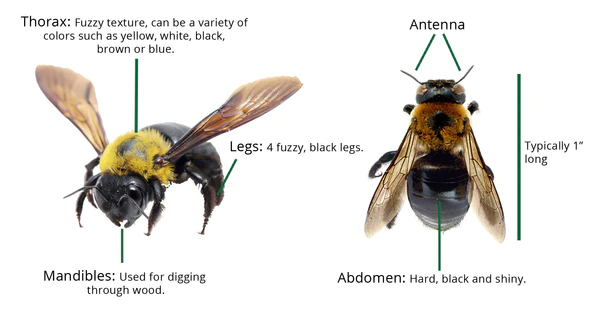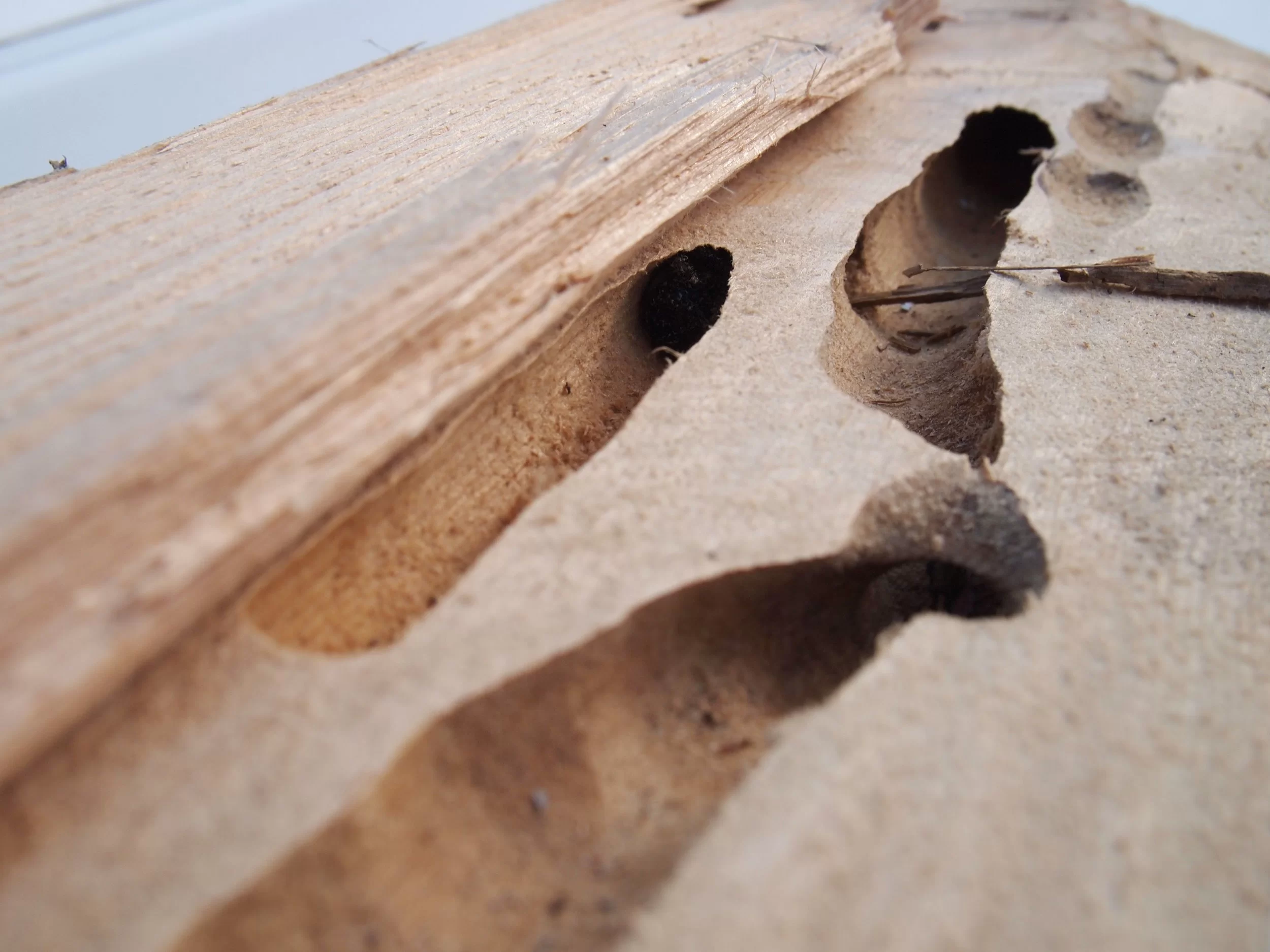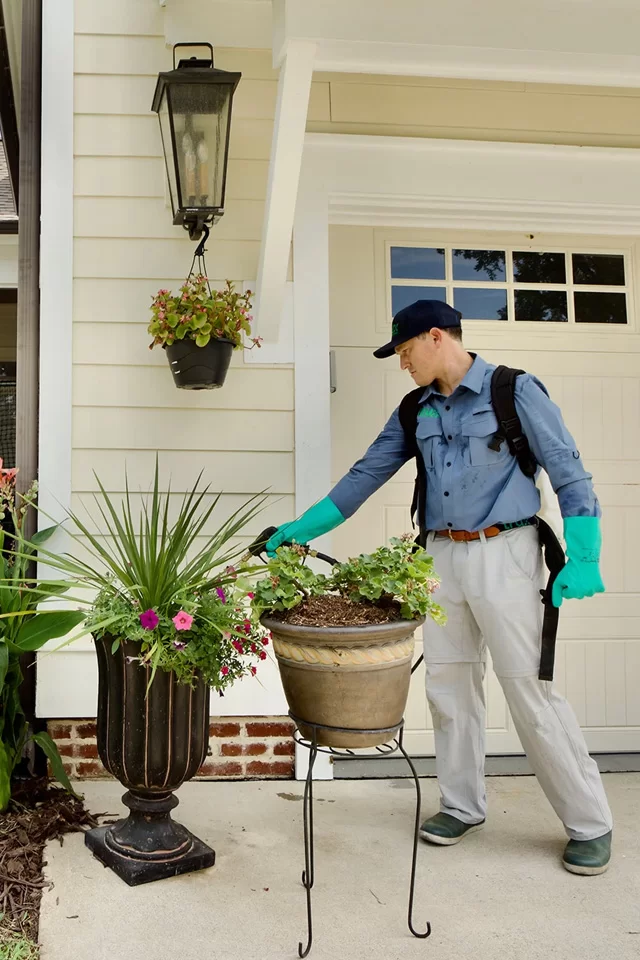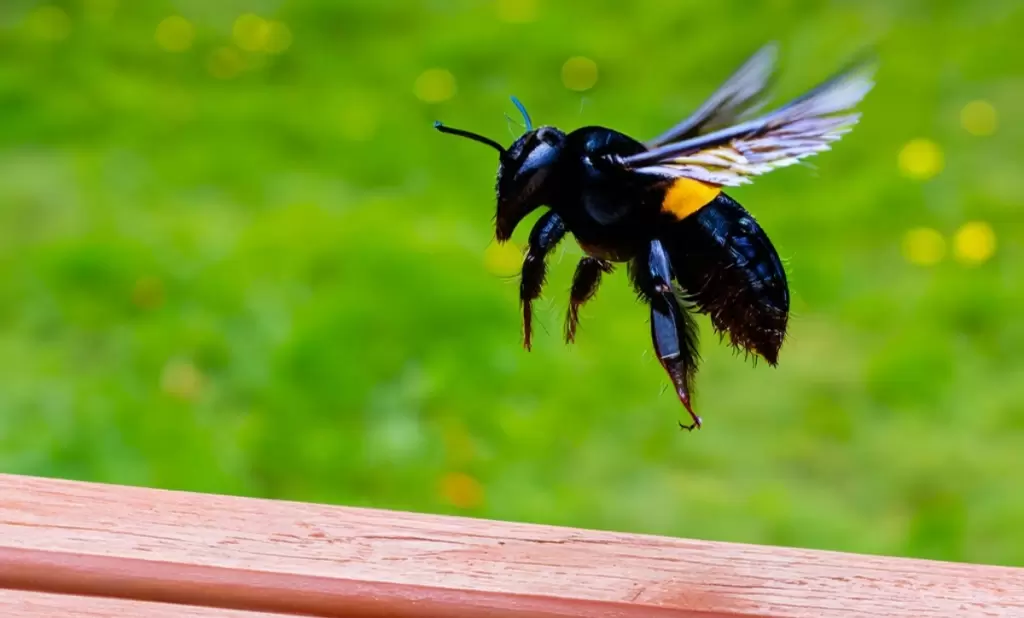Carpenter bees, often mistaken for bumblebees, are a common sight in many parts of the United States. While they play a crucial role in pollination, these buzzing insects can become a cause for concern when they decide to make their homes in and around our living spaces.
In this article, we will delve into the fascinating world of carpenter bees, exploring whether they are merely a nuisance or a potential threat. We’ll also discuss their nesting habits, the damage they can inflict on wooden structures like back decks, and, most importantly, safe and effective methods to manage them. Additionally, we’ll introduce TruX Pest Control and how their year-round maintenance programs can help residents in the Raleigh area keep carpenter bees at bay.

Are Carpenter Bees Dangerous or Just a Nuisance?
Carpenter bees are generally considered more of a nuisance than a direct threat to humans. Unlike aggressive species such as wasps or hornets, carpenter bees are solitary and rarely sting. The male carpenter bee may display aggressive behavior, often hovering around humans, but they lack the stingers that their female counterparts possess. Female carpenter bees are typically focused on nesting activities and may sting only if provoked. However, such incidents are rare, and the effects are generally mild, similar to a typical bee sting.
The primary concern with carpenter bees lies in the potential damage they can cause to wooden structures. These bees are notorious for boring into wood to create nesting galleries, leading to structural issues over time. Understanding their nesting habits and the lifecycle can help homeowners address the issue promptly.
How Do Carpenter Bees Make Their Home?
Carpenter bees are aptly named for their carpentry skills. Unlike honeybees that construct hives with wax, carpenter bees excavate tunnels in wood to create their nests. These tunnels serve as chambers for raising their offspring. The process typically involves the following stages:
-
Excavation: Female carpenter bees use their strong mandibles to bore into untreated or weathered wood, creating a perfectly round entrance hole. Common targets include wooden beams, eaves, and decks.
-
Gallery Construction: Once inside the wood, the female bee creates a gallery, where she lays eggs and provisions each cell with a mixture of pollen and nectar as food for the developing larvae. Multiple bees may use interconnected tunnels, creating extensive networks within the wood.
-
Development: The eggs hatch into larvae, which feed on the provided pollen and nectar. After completing their development, the mature bees chew through the wood to emerge from their nests.
When Do Carpenter Bees Make Homes?
Carpenter bees typically become active in the spring, around March or April, depending on the region. During this time, they begin searching for suitable nesting sites. The warm weather encourages their activity, and mating and nesting activities peak during late spring and early summer. It is essential for homeowners to remain vigilant during these periods to detect and address any carpenter bee infestations promptly.
Can Carpenter Bees Destroy a Back Deck?
While carpenter bees may not pose an immediate threat to the structural integrity of a back deck, their nesting habits can cause significant damage over time. The repeated boring and excavating of tunnels weaken the wood, making it more susceptible to decay and other environmental factors. If left unchecked, carpenter bee infestations can compromise the safety and aesthetics of a back deck or any wooden structure.

Homeowners with wooden decks should be particularly cautious, as the softwoods commonly used in deck construction are attractive targets for carpenter bees. Regular inspections and proactive measures are crucial to preventing long-term damage.
Safely Getting Rid of Carpenter Bees
If you’ve identified carpenter bees on your property, it’s essential to address the issue promptly and safely. Here are some effective methods to get rid of carpenter bees:
-
Seal Entry Points: Identify and seal existing entrance holes with wood putty or caulk. This prevents bees from reusing existing tunnels.
-
Use Insecticides: Apply insecticidal dust or sprays specifically designed for carpenter bees to the entrance holes. These products are available at most garden and home improvement stores.
-
Install Bee Traps: Position bee traps near nesting areas to capture adult carpenter bees. Traps can be an effective method for reducing their population.
-
Repellents: Apply natural repellents like citrus or almond oil to wooden surfaces. Carpenter bees find these scents unappealing and may avoid nesting in treated areas.
-
Professional Pest Control Services: For persistent infestations or to ensure comprehensive control, consider enlisting the help of professional pest control services. TruX Pest Control, for instance, offers year-round maintenance programs that can effectively manage carpenter bees and other pests.
Introducing TruX Pest Control
TruX Pest Control is a leading pest management service in the Raleigh area, dedicated to providing safe and effective solutions for homeowners dealing with carpenter bees and other pests. Their year-round maintenance programs are designed to address pest issues proactively, preventing infestations before they become problematic.
Key features of TruX Pest Control’s services include:
-
Customized Solutions: TruX Pest Control tailors their approach to the specific needs of each property, ensuring a targeted and effective pest management plan.
-
Environmentally Friendly: TruX Pest Control prioritizes environmentally friendly solutions, minimizing the impact on ecosystems while effectively controlling pests.
-
Experienced Technicians: The team at TruX Pest Control consists of experienced and trained technicians who understand the behavior of pests like carpenter bees, ensuring precise and efficient control measures.
-
Year-Round Protection: Their maintenance programs are designed for year-round protection, providing homeowners with peace of mind and a pest-free living environment.
Conclusion
Carpenter bees, though not inherently dangerous to humans, can become a significant nuisance and pose a threat to wooden structures if left unaddressed. Understanding their nesting habits, the potential for damage, and adopting proactive measures are crucial steps in effectively managing carpenter bee infestations.
For residents in the Raleigh area, TruX Pest Control offers reliable and safe solutions through their year-round maintenance programs. By partnering with experts like TruX Pest Control, homeowners can enjoy a pest-free home and protect their property from the damaging effects of carpenter bees and other pests. Don’t let these buzzing insects compromise the integrity of your home – take action today for a pest-free tomorrow.




